Building Computer Science Talent
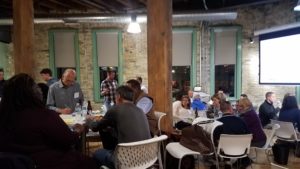 Over the summer we met with Ryan Bennett from SafeNet Consulting and Ryan Osterberg from Brookfield Central to talk about the CS internship program they put together for high school students. That program leads teams of high school students to develop custom applications for other local non-profits. Over the past 2 years, they’ve developed an effective way to engage students in meaningful, high quality work. They have started a new non-profit, Code The Way, to carry on the effort and reach a broader pool of talent.
Over the summer we met with Ryan Bennett from SafeNet Consulting and Ryan Osterberg from Brookfield Central to talk about the CS internship program they put together for high school students. That program leads teams of high school students to develop custom applications for other local non-profits. Over the past 2 years, they’ve developed an effective way to engage students in meaningful, high quality work. They have started a new non-profit, Code The Way, to carry on the effort and reach a broader pool of talent.
In the same way that having a real-world project helps sharpen the thinking of students, having a real-world program as a case study helped us talk through a number of the issues around developing CS talent in K-12.
We began the evening with an overview of the Code the Way program, how it is structured, and the key aspects of the approach that make it a valuable experience for students. Our initial set of small group discussions focused on the aspects of the approach participants found most compelling. Those key aspects fell into the following categories
Collaboration
- Building a pathway from high school to college
Pedagogy
- Context matters (real-world projects)
- Encourages failing forward
- Changes the role of teachers/shifts traditional learning models
- Facilitated Learning
Curriculum
- Teachers don’t feel confident in teaching computer science and those trained gain confidence and leave
- Preparing students for future careers involves all students learning fundamentals of programming
- How do we develop basic technological literacy skills across the student experience
Equity
- The program/curriculum currently caters to top students. How do we reach all students?
Partnerships
- Having real world applications for community organizations is critical
- What other opportunities do we have available in the Milwaukee area for partnerships with corporations
We then moved on to talk through barriers for each of these areas and what we might do to move forward…
Collaboration
Key Issues:
- Time available for professional development, collaboration
- Lack of incentives
- Institutional barriers
- Lack of platform to support collaboration
Strategy:
- Educational policy on CS curriculum
- Data on tech job growth (to make the case for resources)
- Connect with business priorities so they are invested in schools
Pedagogy
Key issues:
- Time
- Intimidating
- Buy-in
- Resources/training
- Incentives to continue up-skilling
- Mismatch between what’s being tested and what industry needs
- CS is not integrated with curriculum priorities
Strategies
- Invite community leaders to an hour of code
- Help teachers know it is ok to fail
- Give teachers a chance to experience the learning module or lesson before going in front of students
- Recognize opportunities to integrate curriculum– saves on time and adds context
- College STEM/CS ambassadors
- Offer more coverage time for teachers so they can learn, explore, collaborate, etc.
Curriculum
Key issues:
- Prioritization of problem solving vs content (aka CS knowledge)
- If we want students to solve real problems, what content do they need to do so?
Strategy:
- Build partnerships/mentors from the “real world” who can inform/provide content, software, etc. which becomes the means to how students solve problems– thus balancing problem solving & content. So… tap into TEALS & leverage new partners
- Quick wins… Talk to TEALS, reach out to local business.
Equity
Key issues:
- School access– courses are offered within K-12
- Qualified instructors
- Paid or unpaid internships vs guaranteed income for students (who can’t afford to go without a summer job)
- Representation of diverse K-12 demographics
- Issues related to geography & transportation
Strategy:
- Centralized platform of program offerings
- District level talks of scope and sequence for CS for K-12
- Survey to identify CS offerings
- Paid internships & provide a pipeline for college & job (stipends/apprenticeships)
- Opening your doors to see what challenges you have on site. Provide opportunities for others to help/diverse help
- Privide transportation or bus passes; offer courses within students’ neighborhoods
Partnerships
Key issues:
- IT vs CS
- Reciprocal accountability
- Equity in service
- Institutional silos
- Lack of social responsibility
- Wanting only “cream of the crop”
Strategies:
- Focus on student’s stories
- Engage smaller businesses
- Talk up success, MPS through suburban districts
- Invite partners to see what is going on
- Understand the customer
- Strong message
- Adjust model to fit more kids
- Teach that failure is an option
Thanks again to The Commons for providing the space and to our featured participants for the experience and insight they brought to the discussion:
Ryan Bennett — Senior Consultant, SafeNet Consulting
Dennis Brylow — Associate Professor, Computer Science, Marquette University
Karen Green — Computer Science Coach, Milwaukee Public Schools
Ryan Osterberg — Computer Science Teacher, Brookfield Central High School
Mark Zacher — Milwaukee Regional Manager, TEALS
Resouces:
You can find an overview of Code the Way here: http://learndeep.org/wp-content/uploads/Case_statement.pdf
The Milwaukee Tech Hub Education Workgroup is a team of community volunteers committed to addressing barriers that will prevent our emerging workforce from accessing opportunities that will allow them to secure and sustain employment in an era of unprecedented technological change. The group’s first deliverables were 1) a presentation to make “A Case for Change in K12”, and 2) web content that might help those charged with building a Computer Science program in schools. Please review these resources before the Collab Lab as they might help spur ideas during your small group discussions. If you have suggestions on how to improve these resources or have questions about the workgroup’s collective efforts, please email MTH.Education@gmail.com

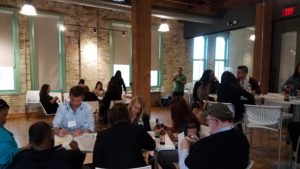 In our May session we explored several issues around creating effective STEM internships for high school students. We began the evening with a review of
In our May session we explored several issues around creating effective STEM internships for high school students. We began the evening with a review of 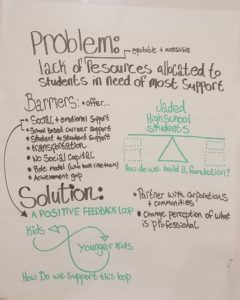 Problem:
Problem: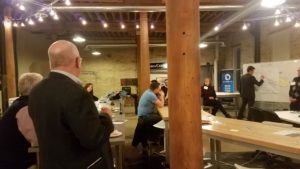 Our April Collab Lab focused on the opportunities we can create for students by engaging partners in the neighborhoods which surround a school. The goal was to explore how we might: engage students in real-world projects with organizations, businesses, and community members in the neighborhoods which surround a school; leverage then enthusiasm and energy of students working on problems they care about; foster relationships that allow for sustainable engagement over the long term.
Our April Collab Lab focused on the opportunities we can create for students by engaging partners in the neighborhoods which surround a school. The goal was to explore how we might: engage students in real-world projects with organizations, businesses, and community members in the neighborhoods which surround a school; leverage then enthusiasm and energy of students working on problems they care about; foster relationships that allow for sustainable engagement over the long term.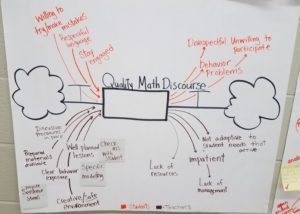
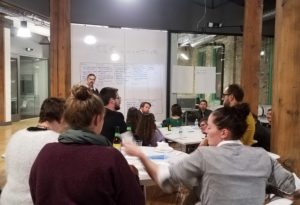 At this session, we used a version of the Lean Startup Canvas to guide our thinking and capture our assumptions about the goals for the project, and how it might be structured. We started the process with a discussion of the problems we are trying to address through the project, and then stepped through the remaining sections of the canvas. We closed with a discussion around the importance of starting with validation of the key assumption– that the problems we identified matter to the students engaged in the project. The end result is available here:
At this session, we used a version of the Lean Startup Canvas to guide our thinking and capture our assumptions about the goals for the project, and how it might be structured. We started the process with a discussion of the problems we are trying to address through the project, and then stepped through the remaining sections of the canvas. We closed with a discussion around the importance of starting with validation of the key assumption– that the problems we identified matter to the students engaged in the project. The end result is available here: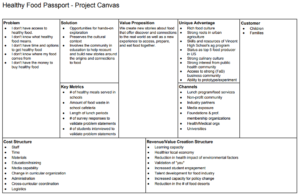
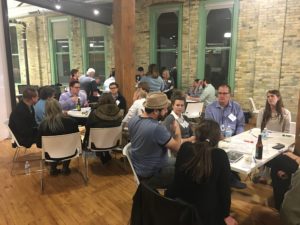 During Collab Lab 16, we walked participants through our model and had them beat up the idea in both small group discussions and a sharing out of key points to all participants.
During Collab Lab 16, we walked participants through our model and had them beat up the idea in both small group discussions and a sharing out of key points to all participants.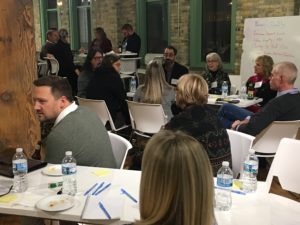 We thought we’d try and find some. Last night we pulled educators from across the area together with healthcare researchers and professionals. We asked Brian King, a Collab Lab regular and former Director of Innovation for the Milwaukee Jewish Day School to facilitate. Brian’s work with students to develop and launch student run projects with a social purpose help make him the right person to guide the group through what we wanted to accomplish. In short, to generate ideas for projects that:
We thought we’d try and find some. Last night we pulled educators from across the area together with healthcare researchers and professionals. We asked Brian King, a Collab Lab regular and former Director of Innovation for the Milwaukee Jewish Day School to facilitate. Brian’s work with students to develop and launch student run projects with a social purpose help make him the right person to guide the group through what we wanted to accomplish. In short, to generate ideas for projects that: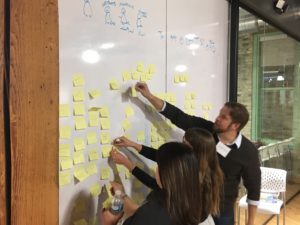 Participants started the evening with some Post-It Note brainstorming on the top five health related issues faced by school-age children. Three volunteers grouped these by topic. We talked through each cluster, did a bit of rearranging and pulled out our blue dots for a vote on which topics were most important.
Participants started the evening with some Post-It Note brainstorming on the top five health related issues faced by school-age children. Three volunteers grouped these by topic. We talked through each cluster, did a bit of rearranging and pulled out our blue dots for a vote on which topics were most important.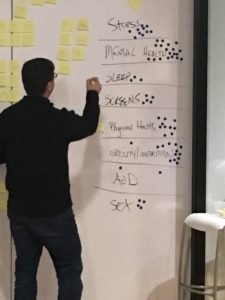
 For this session, we split the attendees across 5 tables, where each participant shared their thoughts on key goals, and came together as a team to share those the felt were most important with the entire group. These included:
For this session, we split the attendees across 5 tables, where each participant shared their thoughts on key goals, and came together as a team to share those the felt were most important with the entire group. These included: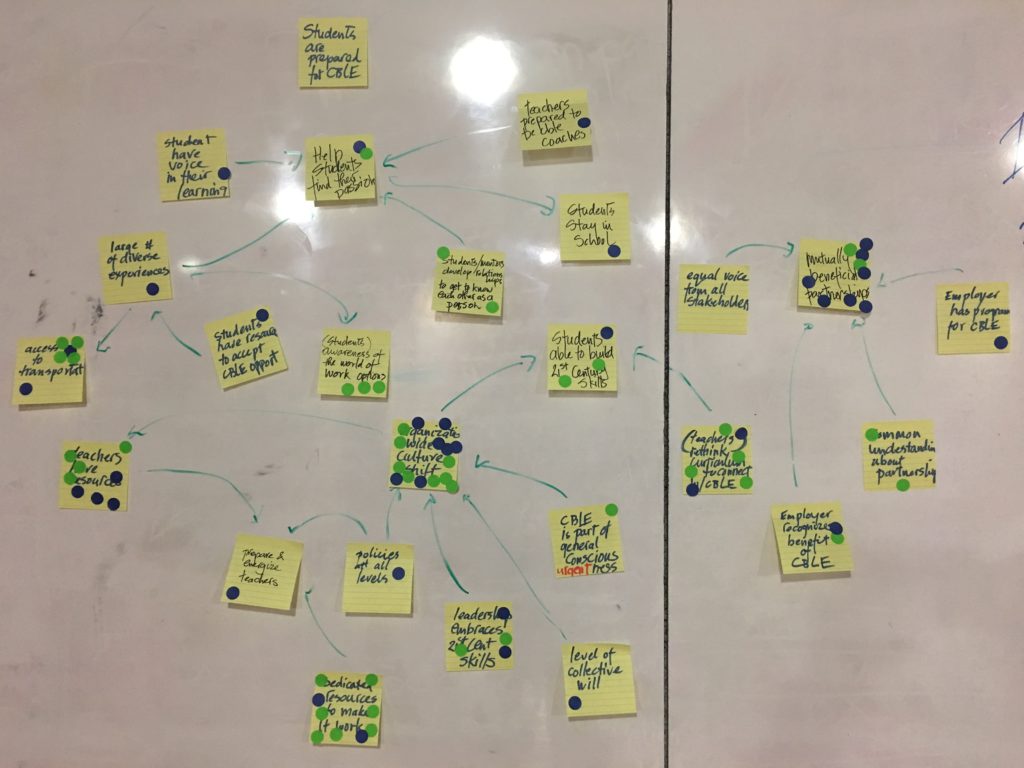
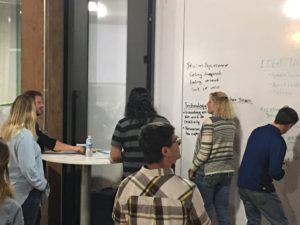 Bring King joined us for Collab Lab 13 to walk us through an exercise to identify problems worth solving at attendees’ schools. The idea was to give participants the feel for a process they could use with their students to identify challenges students could take on as authentic learning experiences. Thanks also go out to David Howell (MSOE/
Bring King joined us for Collab Lab 13 to walk us through an exercise to identify problems worth solving at attendees’ schools. The idea was to give participants the feel for a process they could use with their students to identify challenges students could take on as authentic learning experiences. Thanks also go out to David Howell (MSOE/